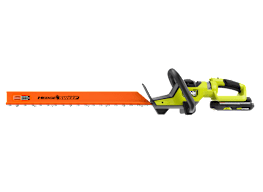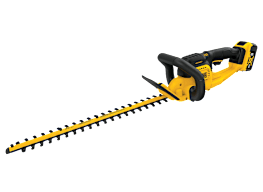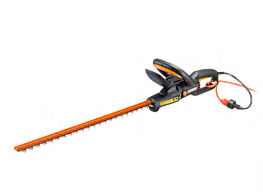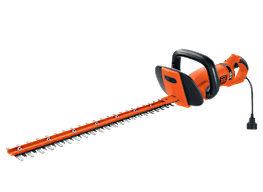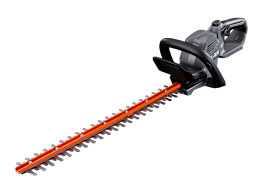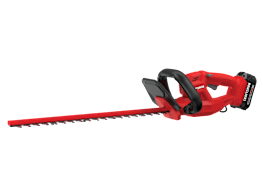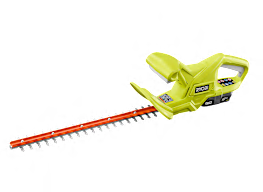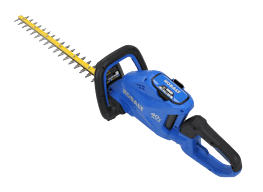Best Hedge Trimmers of 2022
These powerful tools can tackle heavy brush and keep your shrubs looking their best
When you shop through retailer links on our site, we may earn affiliate commissions. 100% of the fees we collect are used to support our nonprofit mission. Learn more.
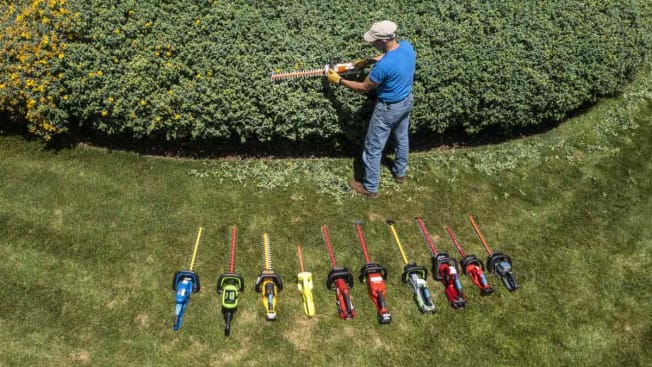
If you think hedge trimmers are solely for sculpting boxwoods and bonsai, think again. They’re also the tools of choice for trimming back overgrown forsythia, bamboo, or any other flora that’s too tough or abundant to tackle by other means. In general, hedge trimmers more or less split the difference between a string trimmer and a chainsaw. They’re worth buying if you have overgrowth that’s too thick for a string trimmer but using a chainsaw would be overkill.
Shopping for a Hedge Trimmer
Because battery hedge trimmers (also sometimes called cordless hedge trimmers) dominate in home centers and hardware stores, that’s where we focus the bulk of our testing. It’s also a category where electrics hold their own against the most potent gas models.
(CR members can jump to our recommendations in our hedge trimmer ratings).
As a whole, you’ll find three types of hedge trimmers: gas, corded electric, and battery options. Here’s what you need to know about them:
- Gas hedge trimmers: They’re powerful tools used by pros and on large properties. But they’re likely overkill in most residential yards, which are typically well served by electrics. Corded electric and battery options are also better for the environment.
- Corded electric hedge trimmers: These trimmers are all you need for lighter trimming close to the house. They tend to be far cheaper—some are only about $50—and can run indefinitely as long as they’re plugged in. You’ll need an outdoor outlet, though, and you’ll be limited by the length of the extension cord. Most outdoor cords max out around 100 feet.
- Battery hedge trimmers: You might think they aren’t as powerful as gas or corded electric hedge trimmers, but increasingly that isn’t the case. Our engineers have found that battery models can be pretty impressive. “When measured without a load, some of the trimmers we tested were able to run nearly 2 hours on a single charge,” says Misha Kollontai, CR’s project leader in charge of hedge-trimmer testing.
Should You Get a Power Base?
Most hedge trimmers are sold as stand-alone tools, but you’ll also find gas- or battery-powered bases that you can outfit with different attachments, such as pole saws, string trimmers, and, yes, hedge trimmers. We recommend avoiding them. Our testing has found that powered bases with different attachments rarely offer performance as good as what you’d get from stand-alone tools.
What Size Hedge Trimmer Should You Buy?
Consider the tasks you need to do. Hedge trimmers feature a cutting bar, with lengths ranging from about 18 to 26 inches. Those with a longer cutting bar can tackle larger shrubs and clear more with each pass. But they’re also harder to use; a bar that’s too long can feel unwieldy. The size of the bar also has an impact on the run time of a battery hedge trimmer. Longer cutting bars clear more vegetation in a single pass, but that also puts additional strain on the battery. As a rule, consider buying the biggest tool you can handle comfortably.
How Consumer Reports Tests Hedge Trimmers
At our Yonkers, N.Y., headquarters, we’ve got a bit of a bamboo problem. Huge swaths of the invasive chutes dominate much of our outdoor space, but that created an opportunity for our testers to put hedge trimmers through their paces, testing for cutting capacity on patches of bamboo around our campus. They started with small growth, about ¼-inch in diameter, working all the way up to inch-thick pieces, noting how quickly and cleanly each tool worked. And while we focused our testing on corded and battery hedge trimmers, we used a single premium gasoline model for reference to make sure the battery tools packed the same punch and could hold their own against a gas tool.
Next, we sized up safety, looking for features like a protective sheath for the cutting bar, blade brakes to stop cutting in an emergency, and designs that would prevent the tools from being a danger to children (for instance, interlocks, or cutting bars that keep small fingers away from the cutting path). We also assessed handling, weight, and balance, and evaluated run time and charge time, along with noise at the ear of the operator.
CR members can read on about the top-scoring hedge trimmers from our tests. You can also explore our comprehensive ratings of corded and battery hedge trimmers.
Best Battery Hedge Trimmers
We’ve tested 10 popular brands; these three stood out, particularly for their ability to power through thick brush. Exact run times vary depending upon the cutting-bar length and the type of shrubs you’re trimming.
Best Corded Hedge Trimmers
Corded hedge trimmers often lack the power found in the best battery hedge trimmers. But the model below edged out the others we tested and is also the least expensive of the bunch.

















